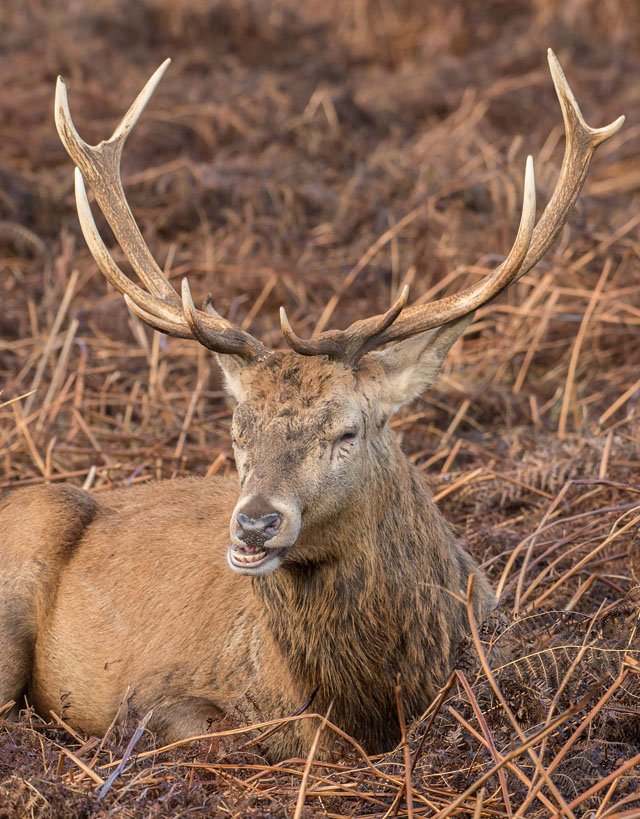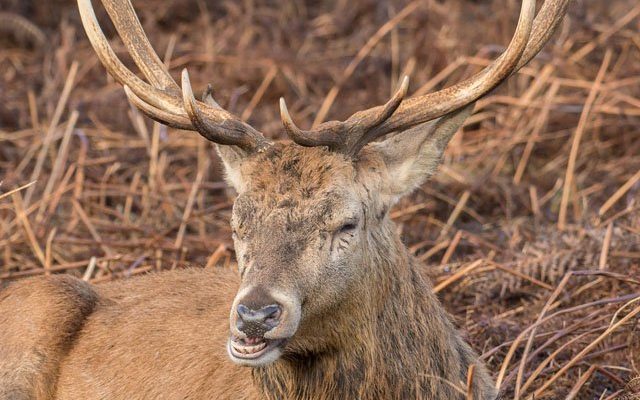
Let’s think of red deer as the grazing artists of the woodland. They’re not just wandering around aimlessly; they’re skilled at finding the best bites in their environment. Their diet and foraging methods are like a well-thought-out recipe—taking into account what’s seasonal, what’s available, and what keeps them healthy. In this article, we’ll explore what red deer eat, how they hunt for food, and the strategies they employ to survive and flourish.
Understanding the Diet of Red Deer
Red deer are herbivores, which means they primarily eat plants. However, not all plants are created equal, and these deer are quite selective about their meals. Their diet mainly consists of:
- Grasses: In the warmer months, red deer graze on various types of grasses, which are abundant and provide a significant source of nutrition.
- Shrubs and Saplings: During the spring and summer, they often nibble on young leaves and shoots from shrubs and young trees.
- Fruits and Berries: When available, they’ll munch on ripe fruits and berries, adding some variety to their diet.
- Bark: In winter, when food is scarce, they might strip the bark from trees for extra sustenance.
In essence, red deer are adaptable feeders. They switch their diet based on the seasons and what’s available. During the summer months, they feast on fast-growing plants, while in winter, they rely more on firmer vegetation or even tree bark. Here’s the thing: this kind of adaptability is crucial for their survival, especially in changing environments.
Foraging Techniques of Red Deer
Foraging is a bit like a treasure hunt for red deer. They have a keen sense of smell and remarkable instincts that guide them to the best food sources. Think of it as a skilled chef choosing the right ingredients for a dish. Here’s how they go about it:
1. Grazing: This is their primary method. Red deer often graze in groups, which helps them spot potential threats while foraging. They keep an eye out for predators while munching on delicious greens.
2. Selective Feeding: Red deer don’t just eat anything in sight. They’re picky eaters, often opting for tender, high-nutrient plants. This selectivity helps them maintain their health and energy levels.
3. Timing: Red deer are most active during dawn and dusk. This crepuscular behavior allows them to forage when temperatures are cooler and predators are less active. It’s like having the best seat in a restaurant during happy hour—more food and less competition!
These techniques ensure that red deer make the most out of their foraging efforts. While they have strong instincts, a bit of experience goes a long way in knowing where to find the tastiest treats.
Seasonal Variations in Diet
As the seasons change, so does the red deer’s menu. This ability to adapt their diet is crucial for their survival.
– Spring: Fresh shoots and grasses begin to emerge. Red deer revel in this time, filling their bellies with young, tender plants. It’s almost like a buffet of options. They also enjoy flowering plants, which can provide some extra calories.
– Summer: This is their feast time. Abundant grasses and berries create a plentiful food source. During this season, red deer can often be found near rivers and lakes, where the vegetation is lush and rich.
– Autumn: As the leaves turn and the temperatures drop, the menu shifts again. Fruits and nuts begin to drop from trees, and red deer take full advantage. They may also start consuming more fibrous plants to prepare for the colder months ahead.
– Winter: With snow covering much of their usual food sources, red deer turn to more varied diets. They’ll eat bark, twigs, and any available shrubs. Essentially, they become opportunistic eaters, making do with whatever’s around.
This seasonal diet shift showcases the red deer’s resilience and adaptability. Knowing when and what to eat is vital for them, especially when the going gets tough!
Hunting Strategies: Predators and Threats
While red deer are herbivores, they are not without their challenges. They’re preyed upon by several predators, and their survival strategies can be quite interesting. Here’s how they handle threats:
– Awareness and Alertness: Red deer have excellent senses. Their sharp hearing and keen eyesight alert them to potential dangers. When foraging, they often pause and look around, ensuring they are safe.
– Group Living: There’s strength in numbers. Red deer often forage in groups, which provides safety in numbers. When one deer senses danger, the others are quickly alerted, allowing them to flee together.
– Camouflage: Their reddish-brown coats help them blend in with forest surroundings, making it harder for predators to spot them. This natural form of camouflage is like having a built-in hideout!
– Flight Response: When a predator strikes, red deer are quick on their feet. They can run at impressive speeds, often reaching up to 30 miles per hour. This ability to flee quickly can mean the difference between life and death.
It’s a tough world out there for red deer, but they’ve developed some solid strategies to evade predators and keep thriving.
The Role of Antlers in Hunting Strategies
You might be wondering, what’s the deal with those impressive antlers? While they’re often associated with mating rituals and displays, antlers also play a role in survival. Here’s how:
1. Defense: In a pinch, male red deer can use their antlers as a formidable weapon against predators. That’s like having your very own shield when danger approaches.
2. Establishing Dominance: During the mating season, males will engage in fierce battles to establish dominance and attract females. The strongest males often have larger antlers, which signal their fitness and suitability.
3. Display for Mates: Antlers aren’t just weapons; they’re also a way for males to impress potential mates. A magnificent pair of antlers can attract female deer, playing a vital role in reproduction.
It’s fascinating how something as seemingly decorative as antlers serves multiple purposes in the world of red deer. They’re not just a pretty sight; they are integral to the deer’s survival and success.
The Importance of Habitat in Diet and Hunting
The habitat of red deer significantly influences their diet and hunting strategies. Their preferred environments consist of vast woodlands, open grasslands, and forest edges. Here’s why this matters:
– Food Availability: A rich habitat means a variety of food sources. The right balance of trees, shrubs, and grassy areas allows red deer to find everything from tender shoots to hardier plants, depending on the season.
– Cover from Predators: Dense forests provide essential cover from predators. This natural camouflage allows red deer to stay hidden while they forage.
– Water Sources: Access to clean water is crucial. Many red deer are found near rivers, lakes, and streams. These water sources not only support hydration but also ensure lush vegetation nearby.
Being in a suitable habitat allows red deer to thrive, which is why conservation efforts focus on protecting these ecosystems. A healthy environment is vital for ensuring these beautiful creatures can continue to flourish.
The world of red deer is a complex interplay of diet, foraging strategies, and survival instincts. From their selective eating habits to their clever hunting techniques, these animals demonstrate impressive adaptability. As we’ve explored, their ability to navigate seasonal changes, evade predators, and utilize their environment showcases the resilience of red deer.
Understanding their diet and strategies isn’t just interesting—it’s also crucial for appreciating how we can protect these majestic creatures and their habitats. Whether you’re enjoying a hike in the woods or simply marveling at nature, remember the red deer and the remarkable journey they undertake every day to thrive in the wild.

